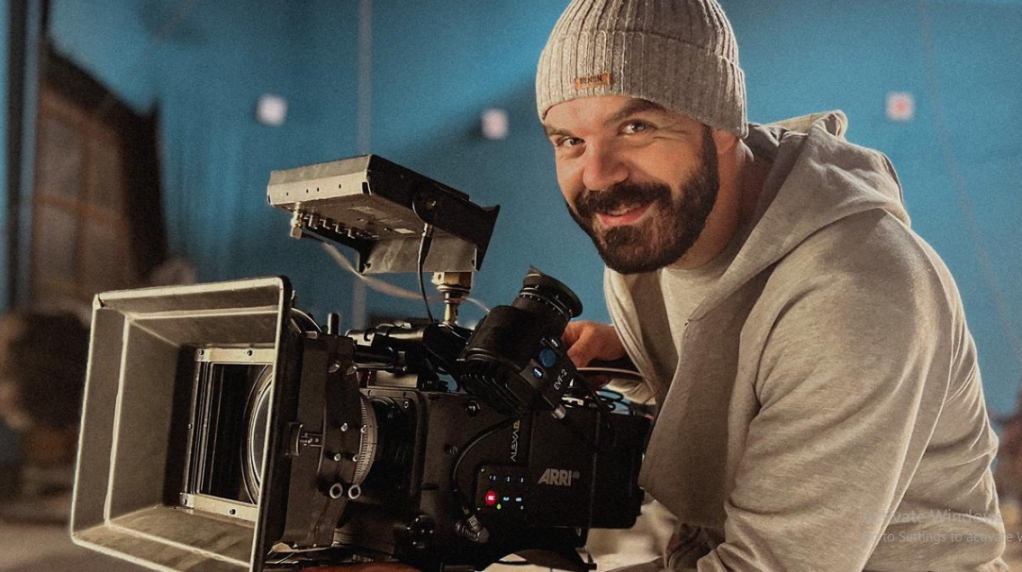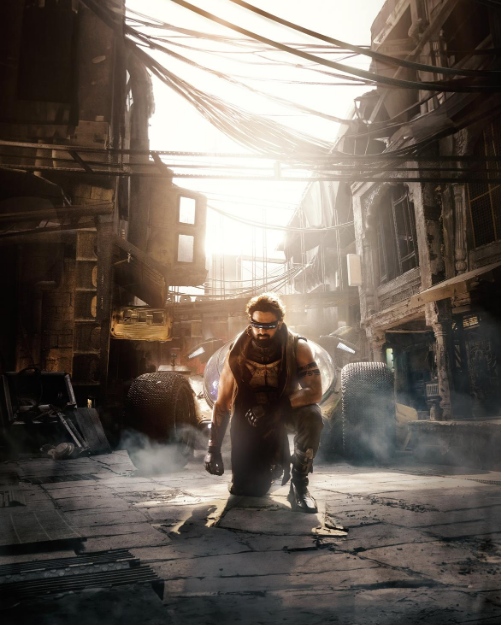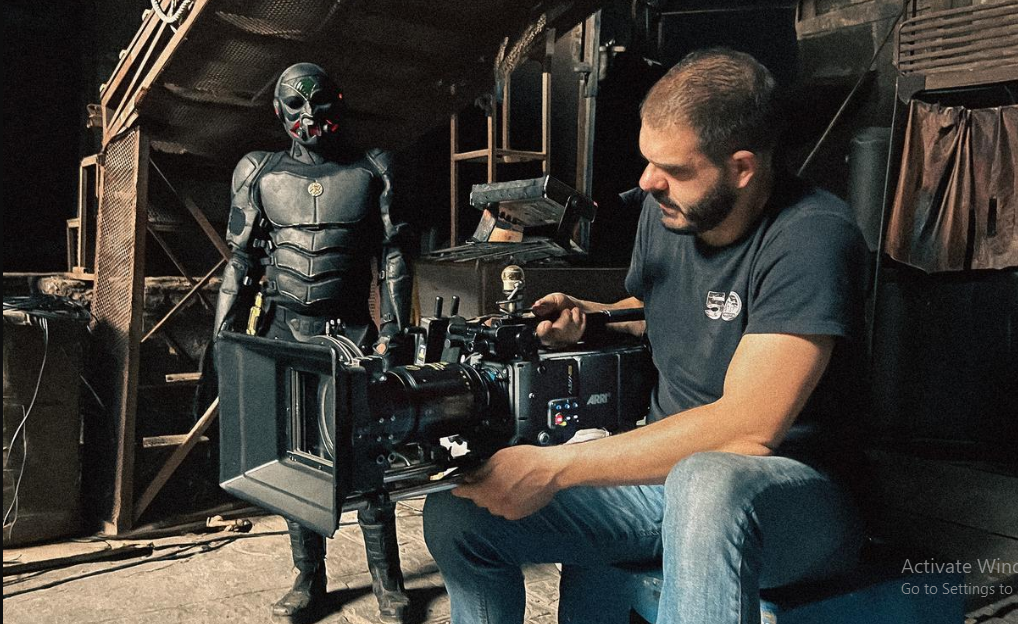Serbian cinematographer Djordje Stojiljkovic on the making of ‘Kalki 2898 AD’ and aiming to give the audiences an immersive, memorable visual experience

One morning, around 6am in Serbia, Djordje Stojiljkovic received a call from director Rajaram, with whom he had worked for Rani Rani Rani, a science fiction film. Belgrade-based Djordje is a cinematographer and visual effects artist with ad films, shorts, documentaries and features to his credit. He was told that a big production house from Telangana had enquired about him. “I then had a conversation with one of the main producers — Priyanka Dutt (of Vyjayanthi Films), followed by a discussion with the director (Nag Ashwin), Djordje recalls. “I reached out to Zoran, my gaffer and friend and asked him if he wanted to go with me to India. He thought I was joking. Soon, we were on a plane from Belgrade to Hyderabad.” The film he came to be a part of, is Kalki 2898 AD, the ambitious mythology-meets-science-fiction film starring Amitabh Bachchan, Prabhas, Deepika Padukone and Kamal Haasan.
Ahead of the film’s release on June 27, Djordje explains what went into its making. Edited excerpts from an email interview with The Hindu:
Before we discuss Kalki 2898AD, tell us briefly about your early interest in cinema. What inspired you to study photography and VFX in Belgrade?
I grew up in Vlasotince in the south of Serbia, Europe. I was surrounded by video and photo equipment at a young age. My father is an Information Technologies teacher and also worked as an event photographer and cinematographer. I began working with him around the age of 10, using a VHS camera in the early 2000s. I quickly fell in love with photography and cinematography.
In addition, my brother and I would watch movies almost every night with our mother, which fuelled my passion for cinema. The internet allowed me to learn and upgrade my skills through photography and cinematography forums. The critical feedback I received from these communities was important in my growth.
I began creating short amateur films with friends from school and basketball. Coming from a small town with few people interested in the field, I had to learn post-production processes on my own, including editing and the basics of VFX. My passion for creating something similar to what I saw on television drove me to continually improve my skills. My early projects also included making television-style documentaries capturing the day-to-day lives of my family. Later, I started doing music videos for local music bands, which allowed me to connect visual storytelling with audio.
Before attending university, I had already edited videos for clients and created motion graphics, animations, and basic VFX work. Initially, I considered studying editing, but I am grateful that I chose to study cinematography in the camera department of the prestigious Faculty of Drama Arts in Belgrade. Throughout this journey, the support of my family was crucial.
One of your short films, Anima, has a dystopian setting. Did director Nag Ashwin watch this or any of your earlier films and approach you for Kalki?

Anima was created between Kalki’s schedules. It has still not been released because I am currently focused on supervising the colour grade of Kalki. I do not have a definite answer as to why Nagi (Nag Ashwin) approached me for Kalki. I often joke that I still do not know why he chose me, but let us hope he made a good decision. I read in an article that he is a master at finding great collaborators.
Can you discuss the pre-production process for Kalki?
We spent a lot of time discussing the world of Kalki — who are the inhabitants, how do they live, and fight, what technology they use, do they sing…? Nagi had already envisioned many aspects of this world even before I joined the team, but the team needed to explore these ideas together to ensure everyone was on the same page.
One of the key aspects of technical preparations was working with miniatures of the large-scale locations. These miniatures helped us identify potential problems and plan the lighting. I was also involved in the production of the movie vehicles, spending many days in workshops to understand how to light the interiors and determine if additional gaps were needed so that sunlight could come through them.
The collaboration between the director, production designer, costume designer, and director of photography is a necessity. I worked closely with production designer Nitin Zihani, discussing each location before it was built, to plan the lighting. I also had numerous discussions with costume designer Archana Rao to establish the colour palettes. The costumes had to complement the lighting and overall visual tone of the film.
Similarly, music plays a vital role in shaping a film’s emotional landscape. I was fortunate to collaborate with Santosh Narayanan. I remember him coming on set with some work-in-progress scores. Hearing those initial pieces was inspiring; it helped establish the atmosphere for that day’s shoot and beyond. This experience solidified for me, once again, that film is an audio-visual medium. More often than not, the power of audio, particularly music, is a great source of inspiration for me as a director of photography.
I also have to acknowledge the support from producers C. Aswani Dutt, Priyanka Dutt and Swapna Dutt Chalasani. Their support made extensive pre-production possible.
During this time, I also dived deep into Indian mythology with the help of some of the crew. Understanding the spiritual importance of these stories and that era was an exhilarating experience, allowing me to discover India’s rich cultural heritage. My goal was to make the visuals both authentic to the mythology and to create a realistic, believable version of the future.
The city of Kasi, as seen in the trailer, is a new domain for an Indian film. However, audiences here are also familiar with international adventures and science fiction films. What kind of visual experience did you want to present?
Kasi and its essence have always been part of world heritage. According to the story, in the future, it is expected to be densely populated, culturally diverse, and globally significant. I aimed to authentically portray the ambition and sincerity of such a depiction.
Kalki 2898 AD marks a significant departure as the first Indian film to explore the future of an Indian city in this manner, distinguishing it from international films typically set in Western contexts. This provided us with a unique canvas to work with.
My approach always involves creating atmospheres and moods that reflect the inner state of the characters and the situations they find themselves in. I focused on crafting a visual language that resonates with the narrative, aiming to deliver an immersive and memorable visual experience.

What made you choose the IMAX digital camera and the Arri Alexa 65 and Arri DNA lenses?
The decision was driven by the project’s vast scale and ambitious vision. The Arri Alexa 65, known for its 6.5k resolution, played a pivotal role in capturing intricate, lifelike images suited for the expansive scope intended for an IMAX release, thereby minimising the need for extensive upscaling.
Pairing the Alexa 65 with Arri DNA lenses was a deliberate choice to elevate our visual storytelling. These lenses, crafted from rehoused vintage glass of iconic brands such as Mamiya and Hasselblad, bring a unique character and texture to the imagery, distinguished by their distinctive swirly bokeh. They reproduce cinematic skin tones, prioritising a natural aesthetic over excessive sharpness. Their capability to handle close-ups intimately and with minimal distortion allowed us to immerse the audience in the emotional states of the characters.
Throughout this process, I had support from my DIT (Digital Imaging Technician), Sai Krishna Koppolu and my focus puller, Hari Krishna in managing the digital workflow and ensuring the integrity of our footage.
Kalki will be screened in urban, semi-urban, and rural areas of India, and not all screens might have the best projection systems. Did you factor in this aspect?
The passion Indian audiences have for cinema ensures that urban centres across India boast some of the best audio-visual projection systems, often surpassing standards found in parts of the Western world. Even in semi-urban and certain rural areas, the quality of 2K projection meets these high standards.
During our shooting process and post-production, including colour grading, we have been mindful of delivering the best possible audio-visual experience across all screening locations in India and internationally, regardless of their technical capabilities.
The trailer shows deep tones ranging from orange-browns to brown-blacks and occasional blues. How did you work on the colour palette for different segments and characters?
The process began by delineating the sub-worlds within the cinematic universe of Kalki 2898 AD. Each of these sub-worlds deserved a distinct visual treatment. We focused on crafting specific colour tones, dynamic ranges, and contrasts for each segment of the film.
It might be early to ask, but can you tell us to what extent the Kasi we see in the trailer constitutes built-up sets and what percentage of it constitutes VFX extensions?
When I first arrived on set in 2021, I was blown away by the sheer scale of the two sets that were already constructed. I had seen these sets in remote meetings, but stepping onto them in person was a different experience. As production progressed, each set seemed to grow even larger! It was a sight to behold.
I remember vividly the first time we laid eyes on the scale of Kasi. Zoran, my gaffer, and I exchanged glances, and thought, ‘This is going to be a task!’ It was one of those moments where the enormity of what we were undertaking hit home. The challenge both excited and daunted us. I also had the invaluable assistance of my junior gaffer, Nishant Katari. He and his light crew consistently delivered their best, overcoming challenges like stormy weather and intense sunlight
To achieve authenticity on screen, most of the sets were built in reality. For Kasi specifically, approximately 90% of what you see in the film was physically constructed. Of course, the sprawling cityscape in the far background owes its grandeur to the exceptional work of VFX companies. They seamlessly integrated these elements to expand the scope and scale of Kasi beyond what was physically possible. The efforts to bring the streets of Kasi and all the other locations to life involved a blend of practical set construction and strategic VFX enhancements. It has been a collaborative effort.




Leave a comment